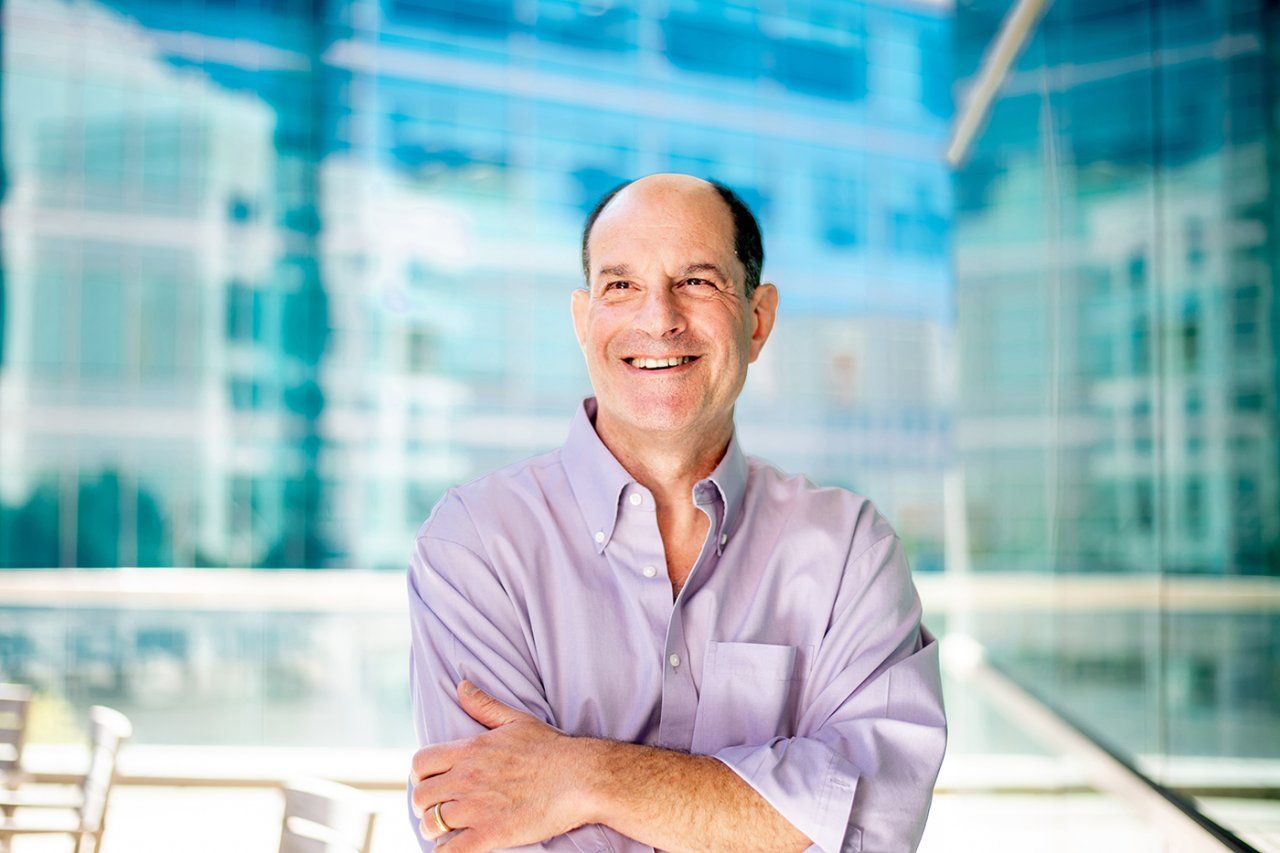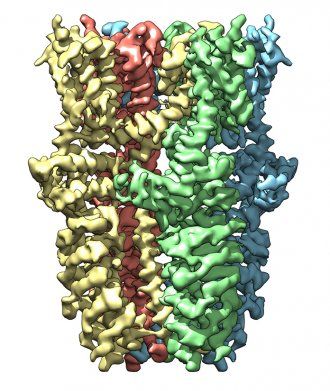Pain Researcher David Julius Wins 2020 Kavli Prize in Neuroscience
UCSF Scientist David Julius Has Revealed Molecular Sensors for Heat, Cold, Inflammation and Itch

UC San Francisco biochemist David Julius, PhD, has been awarded the 2020 Kavli Prize in Neuroscience for his foundational work describing the molecular machines that allow us to feel heat, cold, inflammation and related physical sensations. His research has opened up new avenues for the development of safe, targeted painkillers that researchers hope will avoid the addictive properties and other side effects of opioids.
Julius, professor and chair of the Department of Physiology at UCSF, shares the prize with Ardem Patapoutian, PhD, a professor at Scripps Research and a Howard Hughes Medical Institute investigator. The two received the prize, which carries a cash award of $1 million, “for their transformative discovery of receptors for temperature and pressure,” according to a citation by The Norwegian Academy of Science and Letters. Members of the Academy choose the winners of the biennial Kavli Prizes, in neuroscience, astrophysics, and nanoscience, which were first awarded in 2008 by the Los Angeles-based Kavli Foundation.
“The individual discoveries of David Julius and Ardem Patapoutian have given the scientific community the molecular and neural basis for thermosensation and mechanosensation that is revolutionizing our understanding of sensory detection and will have a profound impact on addressing health and disease worldwide,” said the University of Oslo’s Kristine B. Walhovd, PhD, chair of the Norwegian Academy’s Kavli Prize Committee in Neuroscience.
“This prize is a reflection of all the great people I’ve had the fortune to work with over the years, including many fantastic students, fellows, and collaborators,” said Julius. “I am also grateful to the Norwegian Academy for choosing touch and pain as a topic worthy of recognition. Chronic pain remains a largely unmet medical need, as highlighted in this country by the opioid epidemic, and it is only through basic, curiosity-driven research that we will find new mechanism-based solutions to this pressing problem.”
Homing In on Fundamental Mechanisms of Pain
In three decades of research at UCSF, Julius has focused on a class of ion channel proteins called TRP (pronounced “trip”) receptors, and his work has stimulated intense interest in TRP channels as potential targets for new painkillers.
Since joining the UCSF faculty in 1989, Julius has sought, along with his students and postdoctoral fellows, to understand how neurotransmitters, drugs, and natural products regulate the nervous system. The work that led to the Kavli Prize began by asking how the chemical compound responsible for the spicy “heat” of chili peppers – called capsaicin – elicits a burning sensation when eaten or touched. This research laid the foundation for the detailed characterization of the specific protein responsible, named TRPV1 – a specialized ion channel located at sensory nerve endings, which transmit electrical signals to the brain, where the sensation of heat or pain is ultimately generated.
Julius has shown that “hot” chili peppers are aptly named, since TRPV1 is triggered not only by capsaicin, but also by actual heat greater than 110 degrees Fahrenheit. This ion channel also contributes to the hypersensitivity to heat felt in injured tissue, such as sunburned skin, in which the brain perceives mild stimuli as burning hot.
Information to Aid Design of New Drugs
In recent years, Julius has turned his attention to better understanding the structure of TRPV1 and related molecules, in hopes that this information could aid the design of new pain drugs. In a scientific tour de force in 2013, he and UCSF colleague Yifan Cheng, PhD, used a technique called cryo-electron microscopy, or cryoEM, to determine the structure of TRPV1 at near-atomic scale.

David Julius and Yifan Cheng used cryo-EM to determine the structure of the “wasabi receptor.”
Julius has also applied these approaches to identify the molecular source of the icy sensation triggered by menthol from mint. Just as heat acts on TRPV1 similarly to capsaicin, Julius’s lab found that a related channel called TRPM8 can be activated either by menthol or by cold temperatures. A third TRP channel, TRPA1, responds to the pungent compounds that give wasabi its punch, and is also involved in inflammatory pain. Julius and Cheng have used cryo-EM to determine the structure of this “wasabi receptor,” as well as that of a menthol / cold receptor called TRPM8.
Julius and colleagues continue to use a variety of other natural compounds, including spider and scorpion toxins, to better understand the family of pain receptors these chemicals target, and have embarked on studies of more exotic sensory systems, such as the electrical sensation systems of sharks and skates.
“David’s pioneering work uncovering the sensory mechanisms of touch and pain not only gives us fundamental insights into the workings of the nervous system but also shows great promise for a new generation of safe, targeted pain medications,” said UCSF Chancellor Sam Hawgood, MBBS. “We congratulate him on this great honor.”
The Kavli Prize Laureates are customarily celebrated in Oslo, Norway, in a ceremony presided over by His Majesty King Harald followed by a banquet at the Oslo City Hall, the venue of the Nobel Peace Prize. Due to the COVID-19 pandemic, this year’s award ceremony is postponed and will be held together with the 2022 award ceremony in September 2022.
Julius, the Morris Herzstein Chair in Molecular Biology and Medicine at UCSF, has received numerous honors and awards, including the 2020 Breakthrough Prize in Life Sciences, the Canada Gairdner International Award, the Shaw Prize in Life Science and Medicine, and the Dr. Paul Janssen Award for Biomedical Research. He is a member of the National Academy of Sciences, the National Academy of Medicine, and the American Academy of Arts and Sciences.
“This prize serves to remind us about the international nature of science,” Julius said. “Much of my work has been funded by the National Institutes of Health, but many of the scientists who have come through my lab over the decades and made this work possible have come from all over the planet. International exchange and cooperation are the lifeblood of basic research.”
About UCSF: The University of California, San Francisco (UCSF) is exclusively focused on the health sciences and is dedicated to promoting health worldwide through advanced biomedical research, graduate-level education in the life sciences and health professions, and excellence in patient care. UCSF Health, which serves as UCSF’s primary academic medical center, includes top-ranked specialty hospitals and other clinical programs, and has affiliations throughout the Bay Area.
About The Kavli Prize: The Kavli Prize is a partnership among The Norwegian Academy of Science and Letters, the Norwegian Ministry of Education and Research and The Kavli Foundation (US). The Kavli Prize honors scientists for breakthroughs in astrophysics, nanoscience and neuroscience that transform our understanding of the very big, the very small and the very complex. Three million-dollar prizes are awarded every other year in each of the three fields. The Norwegian Academy of Science and Letters selects the laureates based on recommendations from three prize committees whose members are nominated by The Chinese Academy of Sciences, The French Academy of Sciences, The Max Planck Society of Germany, The U.S. National Academy of Sciences and The UK’s Royal Society. Learn more at kavliprize.org
About The Kavli Foundation: The Kavli Foundation is dedicated to advancing science for the benefit of humanity, promoting public understanding of scientific research, and supporting scientists and their work. The foundation’s mission is implemented through an international program of research institutes, initiatives and symposia in the fields of astrophysics, nanoscience, neuroscience, and theoretical physics, as well as The Kavli Prize and a program in public engagement with science.